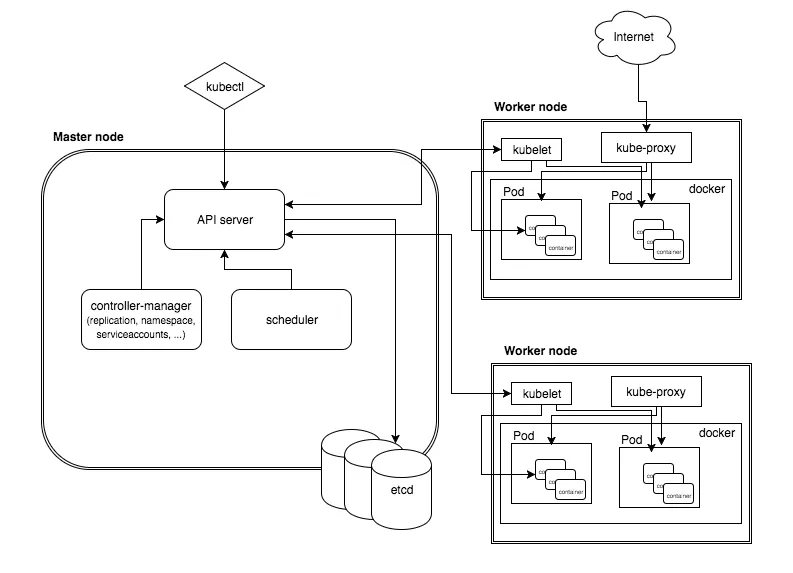Overview of Kubernetes with Architecture Examplained!!- 1. What is Kubernetes?- 2. Why Do we need Kubernetes?- 3. Benefits of kubernetes?- 4. How Kubernetes works aka Kubernetes architecture with image- 5. What is POD?
What is Kubernetes?
Kubernetes is an open source orchestration tool developed by Google for managing microservices or containerized applications across a distributed cluster of nodes. Kubernetes provides highly resilient infrastructure with zero downtime deployment capabilities, automatic rollback, scaling, and self-healing of containers (which consists of auto-placement, auto-restart, auto-replication , and scaling of containers on the basis of CPU usage).
Why Do we need Kubernetes?
Containers are a good way to bundle and run your applications. In a production environment, you need to manage the containers that run the applications and ensure that there is no downtime. For example, if a container goes down, another container needs to start. Kubernetes provides you with a framework to run distributed systems resiliently. It takes care of scaling and failover for your application, provides deployment patterns, and more. For example, Kubernetes can easily manage a canary deployment for your system.
The main objective of Kubernetes is to hide the complexity of managing a fleet of containers by providing REST APIs for the required functionalities. Kubernetes is portable in nature, meaning it can run on various public or private cloud platforms such as AWS, Azure, OpenStack, or Apache Mesos. It can also run on bare metal machines.
Benefits of kubernetes?
- Service discovery and load balancing Kubernetes can expose a container using the DNS name or using their own IP address. If traffic to a container is high, Kubernetes is able to load balance and distribute the network traffic so that the deployment is stable.
- Storage orchestration Kubernetes allows you to automatically mount a storage system of your choice, such as local storages, public cloud providers, and more.
- Automated rollouts and rollbacks You can describe the desired state for your deployed containers using Kubernetes, and it can change the actual state to the desired state at a controlled rate. For example, you can automate Kubernetes to create new containers for your deployment, remove existing containers and adopt all their resources to the new container.
- Automatic bin packing You provide Kubernetes with a cluster of nodes that it can use to run containerized tasks. You tell Kubernetes how much CPU and memory (RAM) each container needs. Kubernetes can fit containers onto your nodes to make the best use of your resources.
- Self-healing Kubernetes restarts containers that fail, replaces containers, kills containers that don’t respond to your user-defined health check, and doesn’t advertise them to clients until they are ready to serve.
- Secret and configuration management Kubernetes lets you store and manage sensitive information, such as passwords, OAuth tokens, and SSH keys. You can deploy and update secrets and application configuration without rebuilding your container images, and without exposing secrets in your stack configuration.
How Kubernetes works aka Kubernetes architecture with image?
Kubernetes follows a client-server architecture. It’s possible to have a multi-master setup (for high availability), but by default there is a single master server which acts as a controlling node and point of contact. The master server consists of various components including a kube-apiserver, an etcd storage, a kube-controller-manager, a cloud-controller-manager, a kube-scheduler, and a DNS server for Kubernetes services. Node components include kubelet and kube-proxy on top of Docker.

What is POD?
It generally refers to one or more containers that should be controlled as a single application. A pod encapsulates application containers, storage resources, a unique network ID and other configuration on how to run the containers.